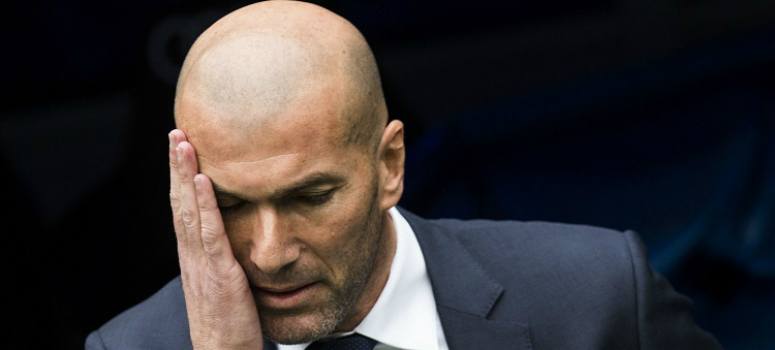Another Champions League semifinals, another meeting between Real Madrid and Bayern Munich. Both clubs have already played 24 times in the top continental tournament, but it never gets old. So far, 12 wins for Bayern, 10 for Real Madrid and only two draws. Similarly to any other major derby, the specific circumstances of each team don’t really matter: when they play each other, nothing is off the cards.
There’s plenty of angles to discuss this matchup. An obvious one is James Rodriguez, who went from supersub under Zidane to outstanding starter under Heynckes, who is finally getting the most out of the gifted Colombian. The Germans’ need for revenge must also be part of any preview about this fixture, as Real Madrid have won at the Alliance in their last two visits, one of them in stunning fashion (4-0) back in 2014, when no other than Pep Guardiola occupied Bayern’s bench.
However, the main running subplot in this column’s humble opinion is Zidane’s dilemma regarding his tactical formation / starting xi to face the in-shape Germans.

His most obvious option is the almost traditional – for top level matches since Gareth Bale became a classy shadow of himself – 4-3-1-2 with Modric, Casemiro and Kroos in midfield, Isco in a free role and Benzema + Cristiano Ronaldo up front.
I won’t get caught up in the specific formation (Could also that be described as a 4-3-3? Or a 4-4-2?), given that the fun of this line-up is precisely the fact that Isco can play anywhere, taking defensive positions of other midfielders when the opposition counters, and picking his spots in offense. He can appear on the left with Marcelo, on the right with Carvajal or in the middle, linking up with Benzema and trying to find Ronaldo in space or, more frequently, for just the Portuguese’s final strike.

Once Bale stopped being available or reliable, the BBC trio became a thing of the past – and one could question, and does, Benzema’s position on the starting xi as well. Zidane replaced the Welshman with Isco, and the diminutive midfielder has answered his coach with excellent performances in the biggest possible scenarios. Not only Isco’s free role, but the level of understanding between Modric, Casemiro and Kroos in terms of how to manage possession and how to go about defensive coverages and switches is something that has been built for seasons while they played together, and that still works wonders against top level opposition, such as Bayern.
That line-up has 80% chances of being the chosen one by Zidane for most of these semifinals, Real Madrid’s only chance to finish this so far disappointing season in a joyful way. But there’s another alternative, one that has been developed by the French manager to cover for the absences of some of his starting midfielders in the past few months, and that could very well be of use against Bayern’s physical squad.
It’s indeed a more classic 4-4-2, with Lucas Vazquez and Marco Asensio on each side of midfield, and two – only two – of Zidane’s midfield trio (probably Kroos and Modric) marshaling the side. Real Madrid does lose Casemiro’s bite on midfield, and that is a huge loss for a side that trusts the Brazilian to win at least three or four one-on-one challenges that could cost his side dear every single match. Given Zidane’s unexplainable predilection for Benzema, Isco usually waits on the bench, although one believes that this formation would hugely benefit from the Malagueño’s inventiveness replacing the Frenchman’s aloof, harmless wandering around the pitch.

If the drawbacks are significant, the benefits are clear: the two youngsters work really hard on the wings, can indeed help their respective fullbacks in defence, open up the pitch and create space for forwards and midfielders to exploit, and impose a much higher pace that could be needed in this fixture, especially in Munich.
Zidane applied this correction in the return match against Juve. The Italians were picking Real Madrid apart with their wingers, as one of the biggest weaknesses of the 4-3-1-2 is that it leaves Carvajal and Marcelo quite exposed. Modric, but especially Kroos, are not very solid supporting their respective fullbacks, and Allegri and his team made the most of that, punishing Real Madrid’s fullbacks more than any other team in recent memory. When Zidane switched to the 4-4-2 introducing Vazquez and Asensio, the tide changed. Remember, Bayern plays with Robben and Ribery wide open and that will be a lot of work for Marcelo and Carvajal, even though the Dutch/French duo prefer to cut inside rather than progress on the sides. In any case, the German side demands a lot from opposing fullbacks.

Make no mistake, this is a different Bayern than the one coached by Guardiola – controlling and talented but lacking spark and making shocking mistakes at this level – or Ancelotti – low discipline and focus in key instances of the match. Heynckes has recovered plenty of top level players who were not performing as they could, such as Javi Martínez, David Alaba, Franck Ribery and Thomas Muller. The recent displays of sub keeper Sven Ulreich, who used to be a laughing stock under Ancelotti, are those of a top goalie now. And Lewandowski looks as threatening as ever, with 39 goals in 43 matches this season.
Heynckes’ Champions League record is impressive: won in 1998 with Real Madrid, and reached the final in 2012 – eliminating Real Madrid on penalties, but defeated by Di Matteo’s Chelsea – and 2013 – winners over Borussia Dortmund.
But back to Zidane’s dilemma, which formation he’ll employ depends on two factors: a) The control of the match in Munich and b) the ability of said formation to feed Cristiano Ronaldo.
Regarding a), Real Madrid will face a very physical team. The resurgence of Javi Martínez, a gifted specimen able to show up in any part of the pitch with top intensity – although not top speed –, only strengthens what was in itself an imposing side. Following this logic, Casemiro needs to be on the pitch to contain the Germans and give stability to his side.

The case of b) is less clear. Since the turn of the year, Real Madrid have been able to keep Cristiano happy with their service regardless of whom played or which formation Zidane chose. However, it’s already become obvious that the Portuguese striker is Real Madrid’s only credible offensive threat: In this edition of the Champions League, he’s scored 15 times, while the next top scorers for his team (Benz and Marcelo ex aequo) have only scored twice.
It would make sense for Zidane to start with Case & Isco and, depending on how the match evolves and how dominating Robben and Ribery look, introduce Vazquez and Asensio later on.
The good news is that Zidane now has two competitive formations for different match situations. The bad news? At this level, half an hour with the wrong line-up could mean the elimination, like we saw against Juve. Let’s see if the French manager gets this one right.
Excellent preview. Bringing on Vazquez, Asensio, and Bale at 1-1 with PSG resulted in 3-1, so it’s probable Zidane reuses that first leg template.
LikeLiked by 1 person
I am not sure I would persevere with Benzema. He basically plays like an extra midfield creator now and we have better specialists for that role. Why not a compromise between the 2 options and start Isco and one of Asensio/Vazquez?
LikeLiked by 1 person